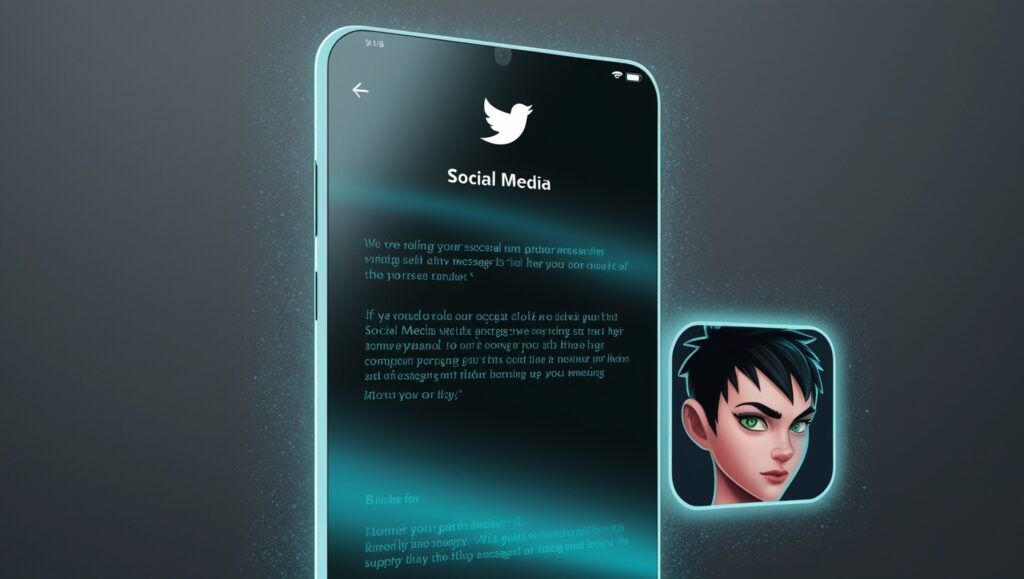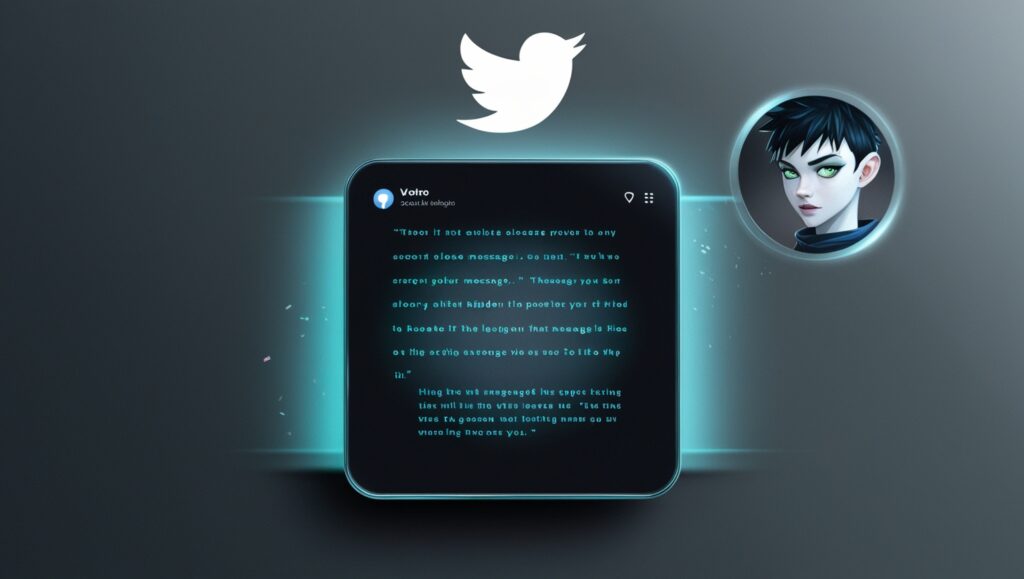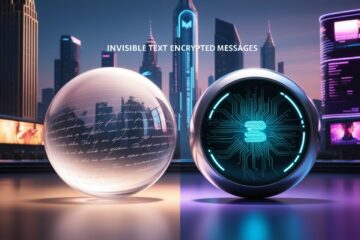As a digital content manager with over a decade of experience, I’ve tested countless messaging tricks and content formats. One of the most clever, fun, and sometimes useful tricks I use personally—and teach to others—is sending hidden messages using invisible text. This technique works on WhatsApp, Instagram, Discord, and more, and can be used for fun, privacy, or formatting.
In this guide, I’ll show you how to send invisible messages step-by-step, how to use Unicode and zero-width characters, and how to do it safely without violating platform rules.
What Is Invisible Text and How Does It Work?
Invisible text is content that’s typed but not visible. It looks like a blank message or space but actually contains Unicode characters that browsers and apps recognize but don’t display.
Most invisible text is created using zero-width characters, like:
| Character Type | Unicode Symbol | Use |
| Zero Width Space | U+200B | Used to create hidden gaps |
| Zero Width Non-Joiner | U+200C | Breaks characters apart |
| Zero Width Joiner | U+200D | Joins characters invisibly |
| Invisible Separator | U+2063 | Often used in hidden code |
| No-Break Space | U+00A0 | Prevents line break but appears blank |
These characters help you insert blank-looking content that can be pasted, shared, or even read by bots, but not by people at a glance.
You can find full lists of Unicode characters at Unicode.org.
Why Use Invisible Text in Messages?

For Privacy
Sometimes you want to say something without it being visible in previews or screenshots. Hidden text can protect sensitive information when used correctly.
For Fun and Tricks
Users on Discord, Instagram, and TikTok often use invisible characters to:
- Send “blank” messages as pranks
- Trick bots and games
- Format bios or comments uniquely
For Creative Design
Content creators sometimes use zero-width spaces to format captions, control line breaks, or add spacing where normal typing won’t work.
Learn more from communities like Stack Overflow where developers explain hidden character behavior.
Where You Can Use Hidden Messages
This method works across many apps, but the behavior may differ slightly:
| Platform | Invisible Text Support | Special Use Case |
| Yes | Send prank or hidden replies | |
| Yes | Trick comment layout or bio gap | |
| Discord | Yes | Used in role names, tricks |
| Partial | May strip zero-width in posts | |
| TikTok | Yes | Popular in comment formatting |
| Telegram | Yes | Secure group replies or memes |
Each app may change its rules over time, so always use invisible text ethically and legally. Most platforms allow formatting tricks as long as they don’t mislead, impersonate, or spam.
How to Generate Invisible Text Easily
You can use online tools to generate invisible text using zero-width characters:
- Unicode Text Converter by Compart
- Zero Width Space Generator – Qwerty.dev
- Empty Character Generator – Lingojam
Steps to generate hidden messages:
- Visit a zero-width character generator
- Copy the invisible character (looks blank!)
- Paste into your chat app, bio, or message box
- Send it—others will see a blank, but it’s not empty!
How to Send Hidden Messages on WhatsApp
WhatsApp supports zero-width characters in chats. To send a hidden message:
- Copy a zero-width space (U+200B)
- Open a chat
- Paste it in the text box
- Hit send
You’ll appear to send a blank message. For fun, try combining it with text using symbols or emojis for a layered prank. You can also use it to format WhatsApp status text creatively.
For more fun with WhatsApp, check WhatsApp Features Guide.
How to Use Invisible Text in Instagram Bios
Instagram lets users personalize bios with emojis, spaces, and symbols. Zero-width characters help with:
- Aligning text creatively
- Creating invisible space between emojis
- Adding formatting gaps
To do this:
- Copy a zero-width space
- Go to Instagram > Edit Profile > Bio
- Paste where you want the gap
- Save
You’ll notice your bio has invisible formatting, which is great for creators, brands, or fun profiles. You can also add it to Instagram captions to space out affiliate links or hashtags without clutter.
Want to test it? Try copying text from Unicode directly here.
How to Send Hidden Messages on Discord
Discord is one of the most advanced apps for using Unicode tricks. You can:
- Send hidden replies
- Mask messages with zero-width joins
- Format usernames and roles
A popular prank:
- Send a full message made from invisible characters
- Add an embed or emoji to confuse the recipient
But always follow Discord’s Community Guidelines to stay within safe limits.
Let me know when you’re ready for the second half, where we’ll go into:
- Security and ethical use
- How these tricks relate to SEO and bots
- Smart dos and don’ts
- Best practices for 2025 content formatting
How to Send Hidden Messages on Social Media Using Invisible Text

Can Bots Read Invisible Text?
You might think invisible text is “invisible to everyone,” but that’s not exactly true. While humans can’t see it on the screen, bots and machines can. This is why many content creators use invisible characters in clever ways—especially when it comes to SEO, formatting, or data scraping protection.
For example, search engines like Googlebot can crawl and read zero-width characters, but may flag them if used for manipulative purposes (like keyword stuffing). However, Instagram bots and Discord scripts often ignore or skip over invisible text entirely.
That’s why it’s sometimes used to bypass spam filters or trick automated moderation systems—though you should never use it to break rules or impersonate someone, as that can get you banned.
Learn more about web crawler behavior from trusted resources like Google Search Central.
Are There Legal or Safety Risks?
Let’s get real—using invisible text the wrong way can be risky.
Here are common unsafe or unethical uses:
- Hiding offensive or misleading content
- Impersonating someone with an invisible handle
- Circumventing content filters on apps
- Manipulating bots or violating platform terms
Safe and ethical uses include:
- Creative formatting in bios or posts
- Sending blank messages for fun
- Enhancing accessibility (e.g., text for screen readers)
- Private password encoding (when used offline)
I always advise clients and teams I manage to use invisible characters for creativity, not deception. That’s how you avoid getting flagged or losing platform trust.
Tips for Using Invisible Text Safely
Here are some best practices I recommend to my clients and digital teams:
| Tip | Why It Matters |
| Don’t spam with blank posts | Can trigger anti-spam filters |
| Avoid hiding links or ads | Violates most platform policies |
| Use in moderation | Too many invisible characters look suspicious |
| Always test before posting | Some apps may block or auto-format |
| Be transparent if needed | Especially in professional use |
If you’re a business or creator, focus on enhancing user experience, not tricking the system. Creativity wins over manipulation.
Use Invisible Text in Games or Challenges
Invisible text isn’t just for social media—it’s used in online games, puzzles, or escape rooms too. Some developers use it to:
- Hide Easter eggs in dialogue
- Trigger secret events when the player “types nothing”
- Add mystery to chat-based games
You can explore more creative examples in online platforms like:
- Itch.io for indie games
- Steam Workshop for mods with secret text layers
Adding this trick to games or interactive posts gives a cool mystery vibe—and players love discovering hidden secrets.
What Not to Do with Invisible Text
As a professional manager, I’ve reviewed and audited dozens of accounts misusing invisible text—and many of them faced problems. So, here’s what you should never do:
❌ Don’t Use It to Fake Engagement
Some people try to insert invisible characters to bypass Instagram comment limits or spam emojis. This won’t grow your brand—it could get your comments hidden or deleted.
❌ Don’t Use It to Bypass Name Filters
Changing your profile name to something “empty” might look cool, but it often violates the platform’s naming policy.
❌ Don’t Trick Bots or Moderators
If you’re using zero-width characters to sneak around chat filters or AI moderation, you’re risking your account.
Play fair. Use the tool for fun, art, or formatting—not cheating.
Final Thoughts: Should You Use Invisible Text in 2025?
Yes—but wisely.
Invisible text is one of the most fun and flexible Unicode tricks available in messaging today. As long as it’s used ethically, creatively, and safely, you can enhance your digital style, build intrigue, and engage followers in a new way.
Personally, I use zero-width spaces in Instagram bios, to format Discord community posts, and occasionally in puzzles or creative writing. It’s a tool—not a hack—and like any tool, it depends on how you use it.
Summary Table: Quick Uses and Risks
| Use Case | Safe? | Recommended |
| WhatsApp blank message prank | ✅ | Yes |
| Hidden Instagram formatting | ✅ | Yes |
| Discord invisible usernames | ⚠️ | With caution |
| Hiding profanity or spam | ❌ | No |
| SEO keyword stuffing | ❌ | No |
| Game Easter eggs or puzzles | ✅ | Yes |
| Creative TikTok captions | ✅ | Yes |
If you’d like to play with invisible text or send hidden messages, I recommend visiting trusted Unicode tools like:
- Unicode Table by FileFormat
- Zero Width Space Generator
- Text Steganography Tools
Need help crafting invisible content that works for your brand or project? Reach out—I’m always happy to help based on my real-world experience managing social content strategies.



